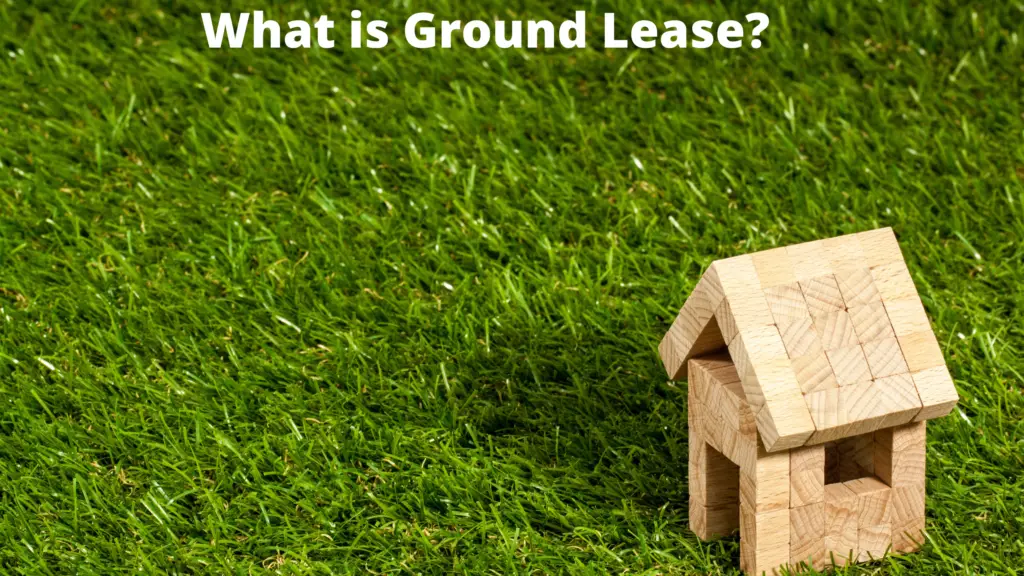A commercial lease is a type of lease that businesses enter into with a landlord. Leasing a property instead of acquiring it, can be beneficial for them as it allows them to manage capital, while also keeping the expenses down to a minimum.
Commercial leases are different from residential leases as they allow both parties to enter into the agreement with more flexibility when it comes to the terms of the lease.
Commercial leases will also have some terms defined beforehand, which specify the parties’ duties and expectations.
Sometimes, businesses may not find a property that meets their needs. Or sometimes, they may not require a building but just land, which they can develop to meet their specific needs.
Therefore, a particular type of commercial lease that businesses enter into to meet these requirements is known as a ground lease.
Ground Lease define:

A ground lease is a lease that involves only leasing ground, also known as land, and not any actual property. Usually, businesses enter into a ground lease intending to develop the land or build on it.
Therefore, a ground lease involves a business entering into a commercial lease with a landlord for undeveloped commercial land.
The lease gives tenants the right to make changes and develop the land, according to their needs.
Once the period of the lease is over, the tenant returns the land, with the development, to the landlord.
In a ground lease, any improvements to the land, or any building on it, will legally belong to the tenant until the lease is active.
The landlord will receive the legal right to the changes made to the land, after the period of the lease is over.
It is beneficial to the landlord, who can sell the land, with the improvements, at a higher price later.
For the tenant, it means any expense on the land is not a capital expenditure but rather a revenue expenditure.
While technically, a ground lease is a type of commercial lease, it differs significantly from the other types of commercial lease.
Usually, these leases are common with shopping malls or office buildings where the tenant needs land to build on but does not want to bear the expense related to acquiring land.
Due to their nature, ground leases need to be long-term rather than short. Typically, ground leases span between 50 to 99 years.
Ground leases will also have some terms that define the rights and responsibilities of both parties to the lease. These will include terms, such as who owns the improvements made to the land, etc.
They will also consist of terms regarding who is responsible for the expenses, which is usually the responsibility of the tenant.
These expenses include costs required for the improvement of the land, such as construction, renovations, repairs, taxes, insurance, etc.
Types of Ground Leases
Ground leases may come in one of two types, subordinated and unsubordinated ground leases.
1) Subordinated Ground Leases
Subordinated ground leases are when the landlord allows the tenants’ construction lender to have priority rights to the land.
Subordinated ground leases are vital when tenants construct the land through borrowed finance.
The risk for landlords is higher for subordinated ground leases, but they also get paid higher for it. In subordinated ground leases, the landlord basically allows the tenant to use the land as collateral.
2) Unsubordinated Ground Leases
An unsubordinated ground lease is the opposite of subordinated ground lease. In unsubordinated ground leases, the landlord retains the right to the claims on the priority when the tenant defaults.
Since unsubordinated ground leases are riskier for lenders, they may not grant a loan to the tenant at all, or very high costs.
However, in the case of unsubordinated ground leases, the landlord receives lower compensation as compared to subordinated ground leases.
Advantages of Ground Leases
Ground leases are beneficial for both tenants and landlords. For tenants, a ground lease allows them to build on land without having to acquire it.
Similarly, ground leases enable tenants to obtain rights to land in prime locations, which may be very expensive if acquired.
For landlords, ground leases allow them to receive regular compensation or rent in exchange for the lease.
Furthermore, it also allows them to benefit from the improvement made to their property in the future. Lastly, it gives landowners certain tax benefits.
Disadvantages of Ground Leases
Ground leases can also be disadvantageous for both the parties involved. First of all, for tenants, the costs of ground leases may exceed the cost of acquiring property in the long run.
Similarly, tenants may need approvals from the landlord to make changes, which may delay the process of improvements or construction.
For landlords, ground leases may sometimes come with some tax implications, which may outweigh the tax advantages.
Similarly, if the rent on ground leases is fixed and not adjusted for inflation, the rent may not be sufficient for the landlord due to the length of ground leases.
Conclusion
Ground leases are a type of commercial lease, which allows businesses to lease land from a landlord.
Once they lease the land, they can make improvements to it according to their needs. Ground leases are usually between 50-99 years.
There are two types of ground leases, subordinated and unsubordinated. Ground leases can have advantages and disadvantages for both the tenant and the landlord.
